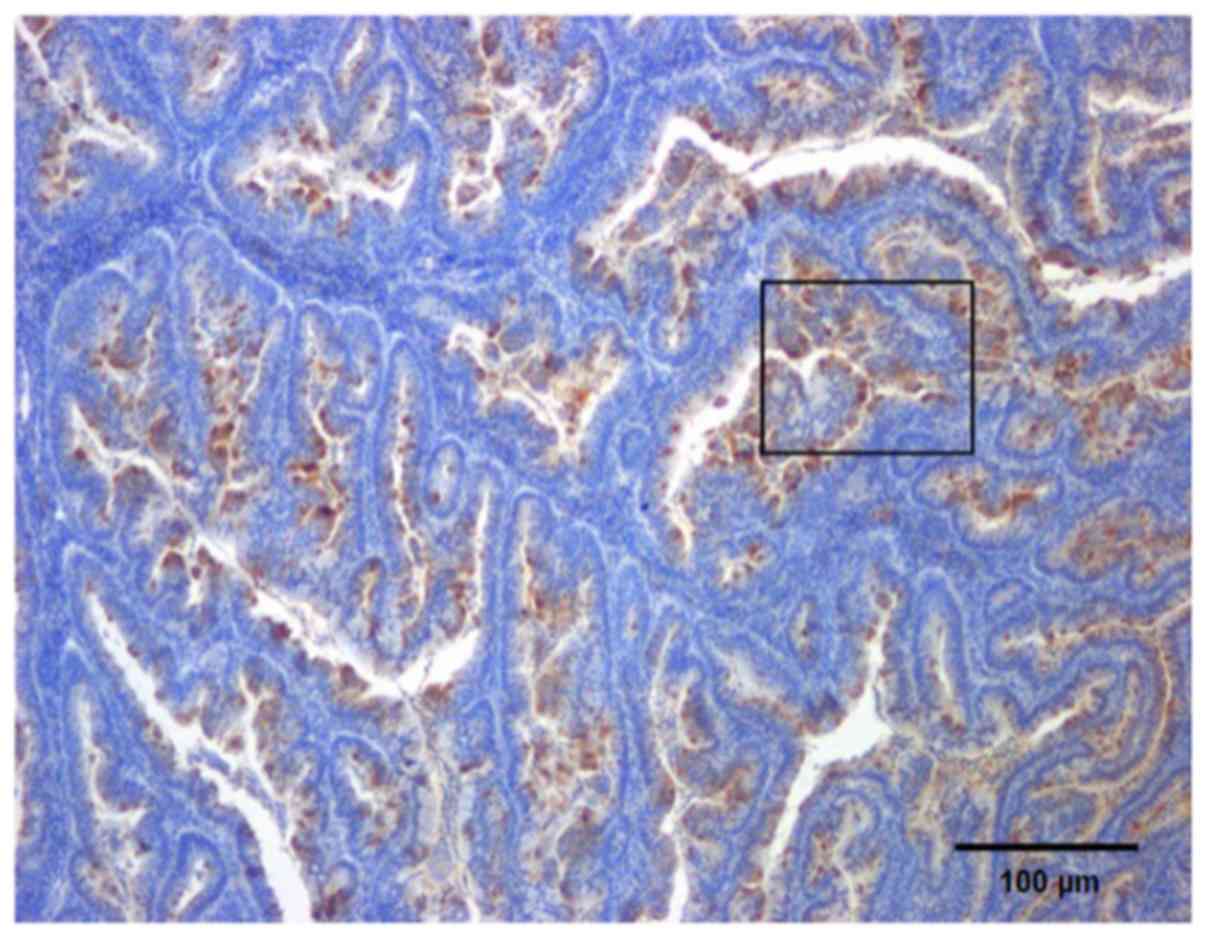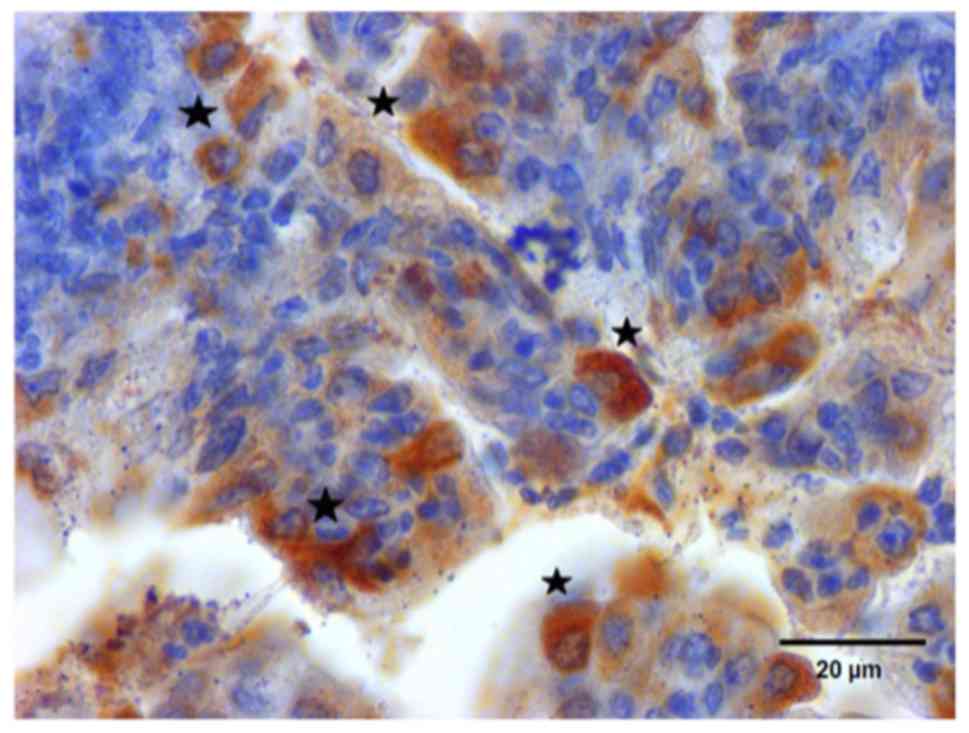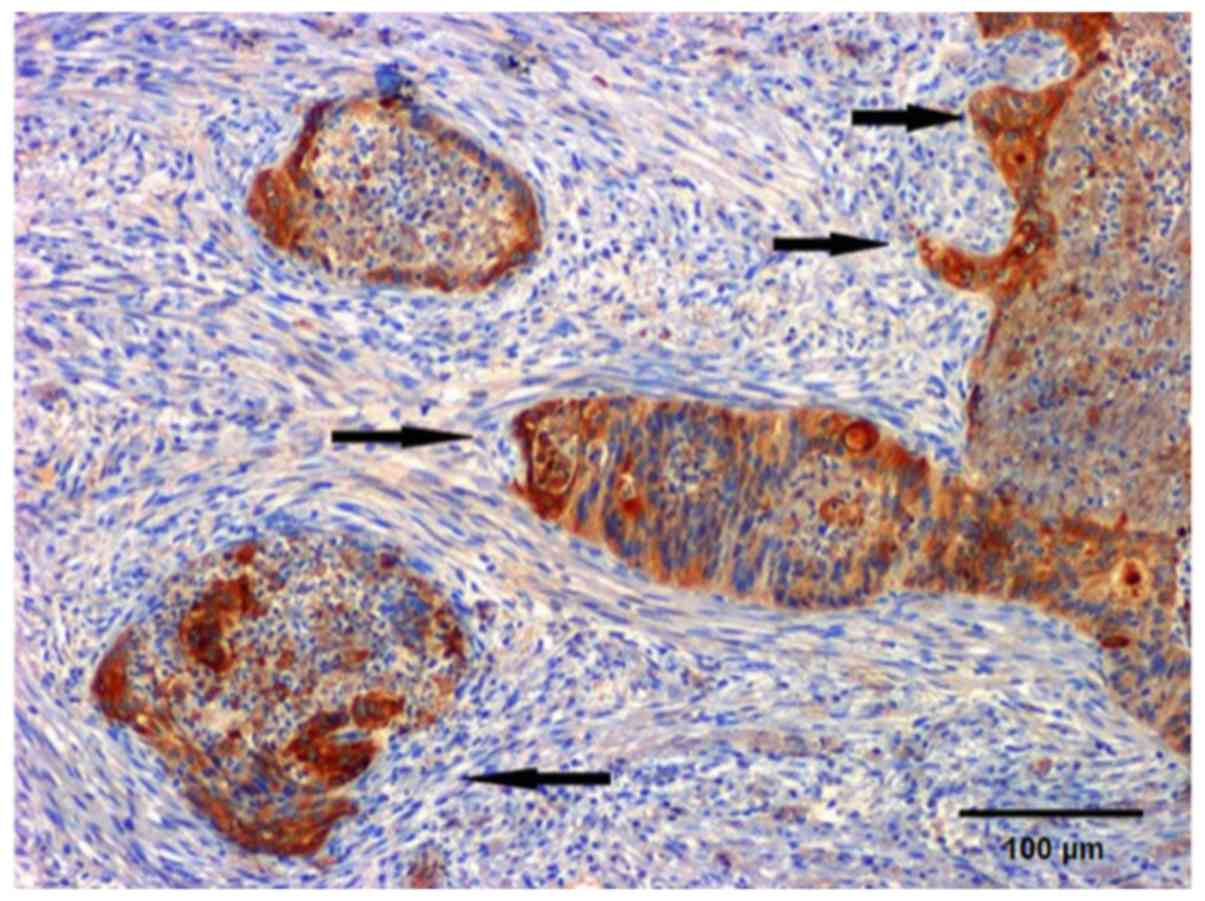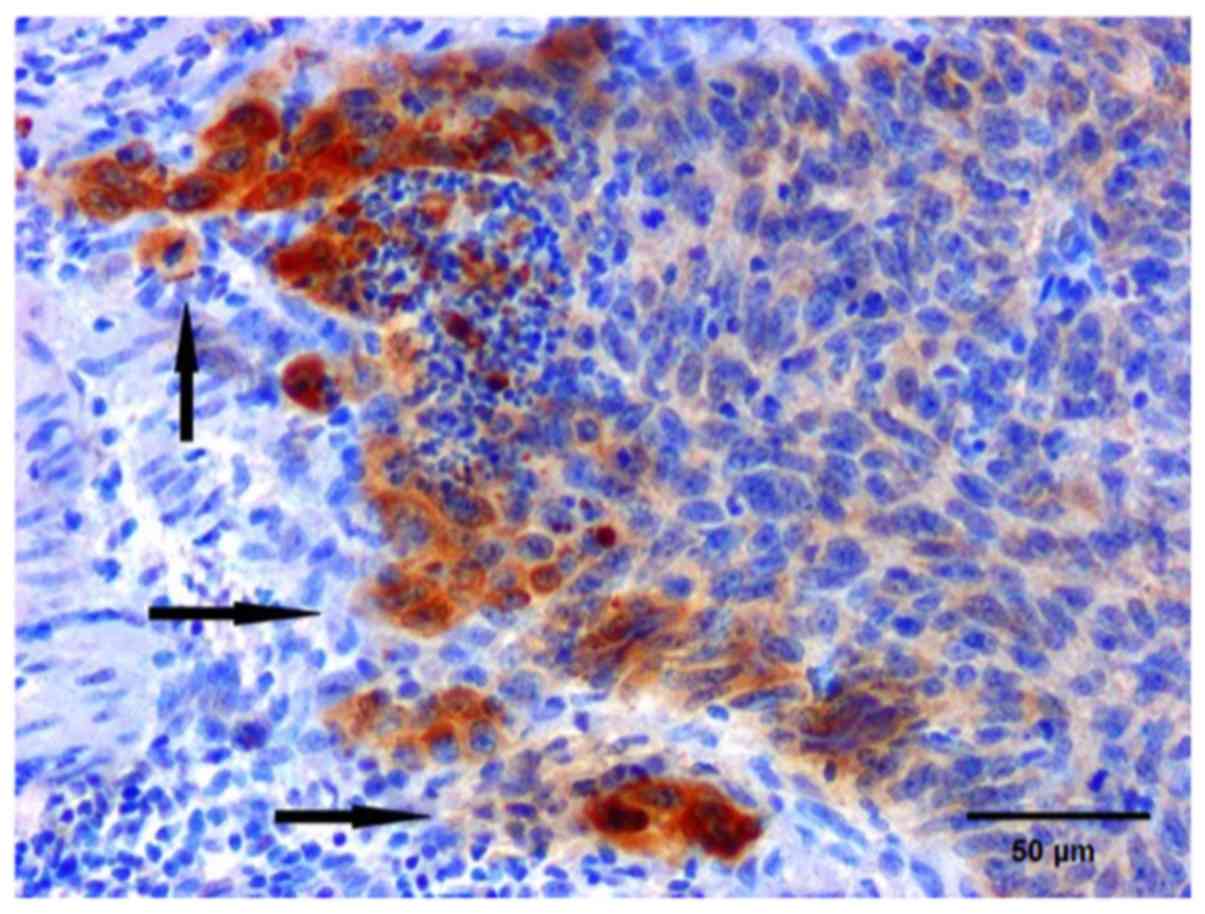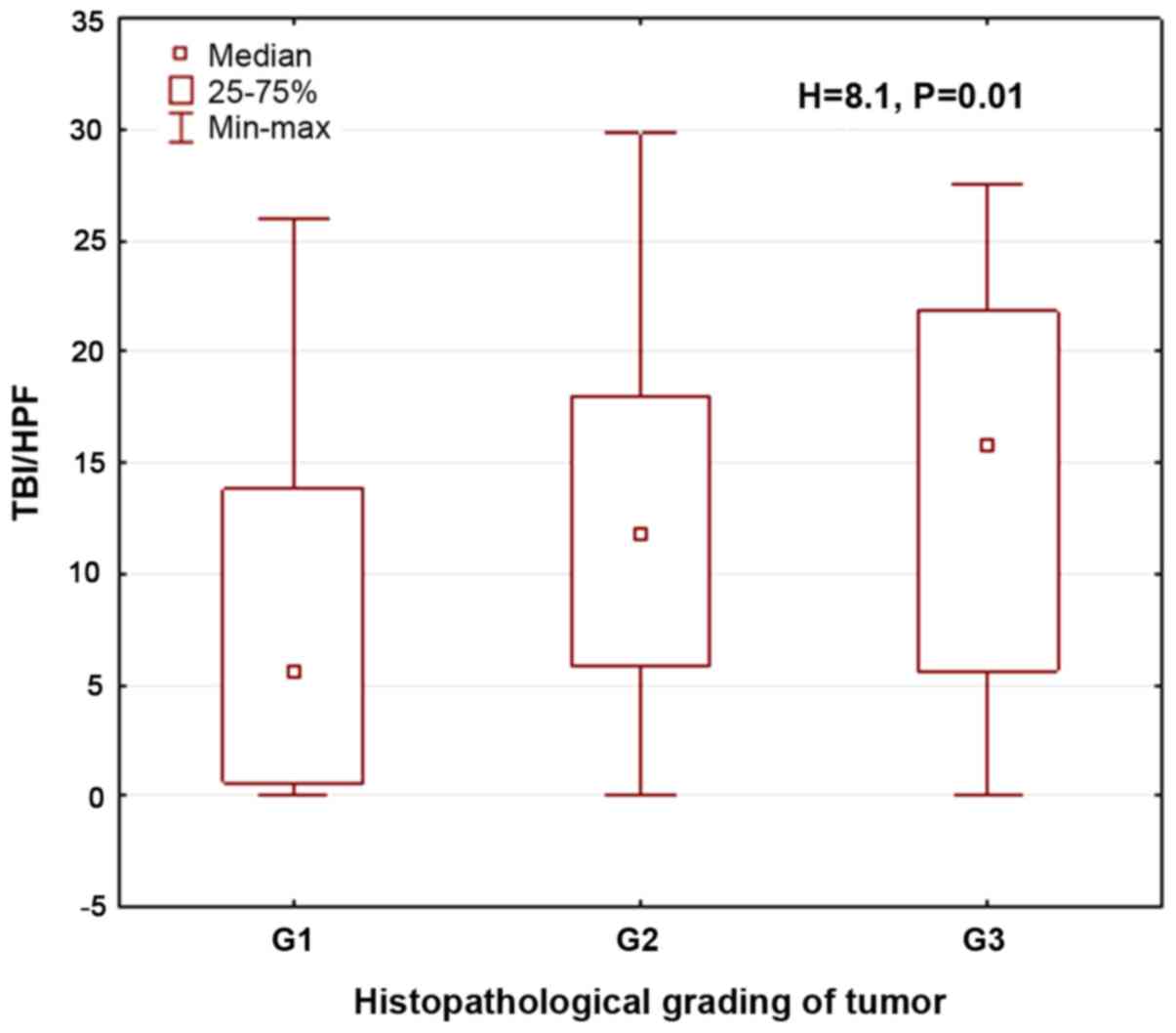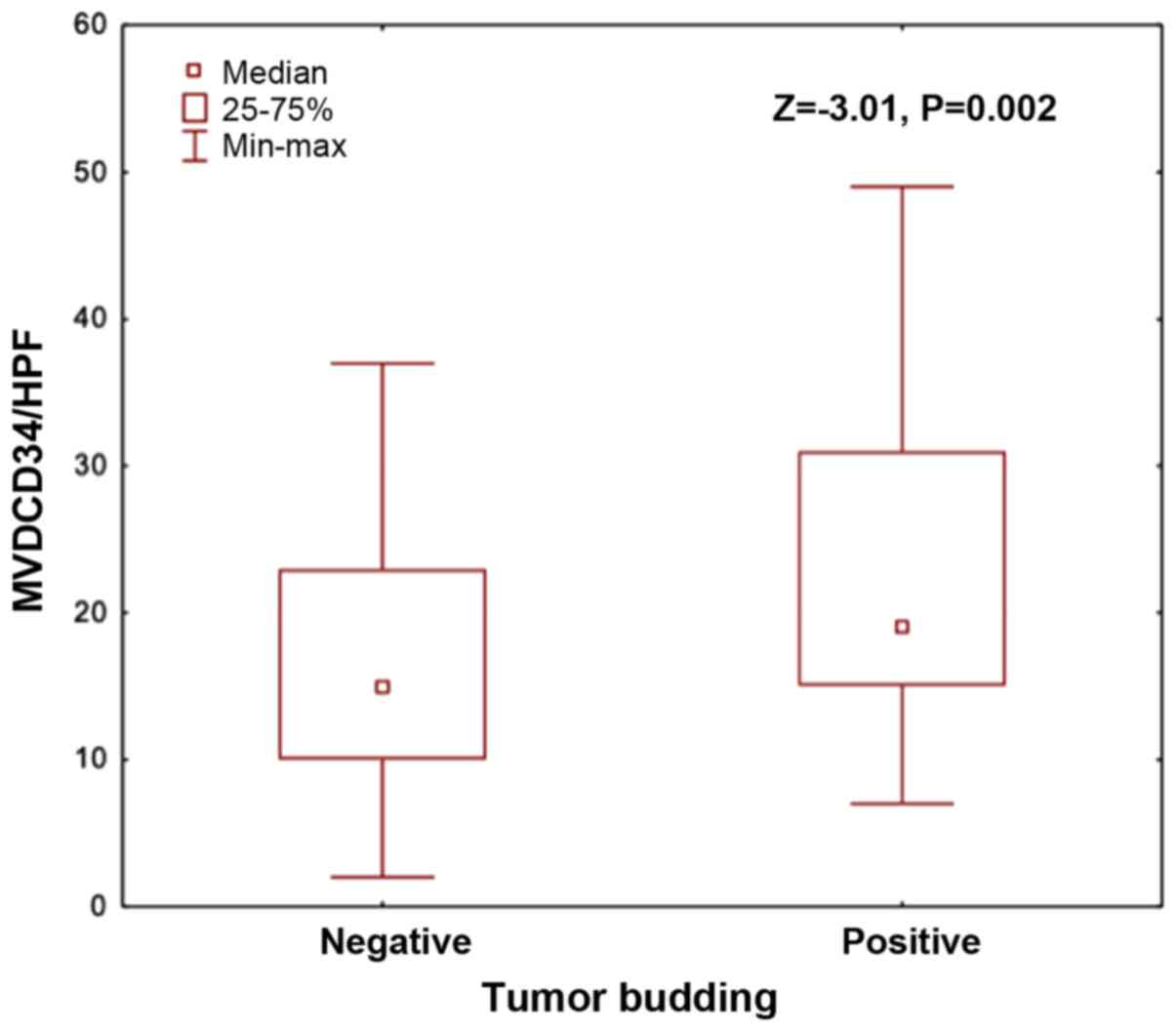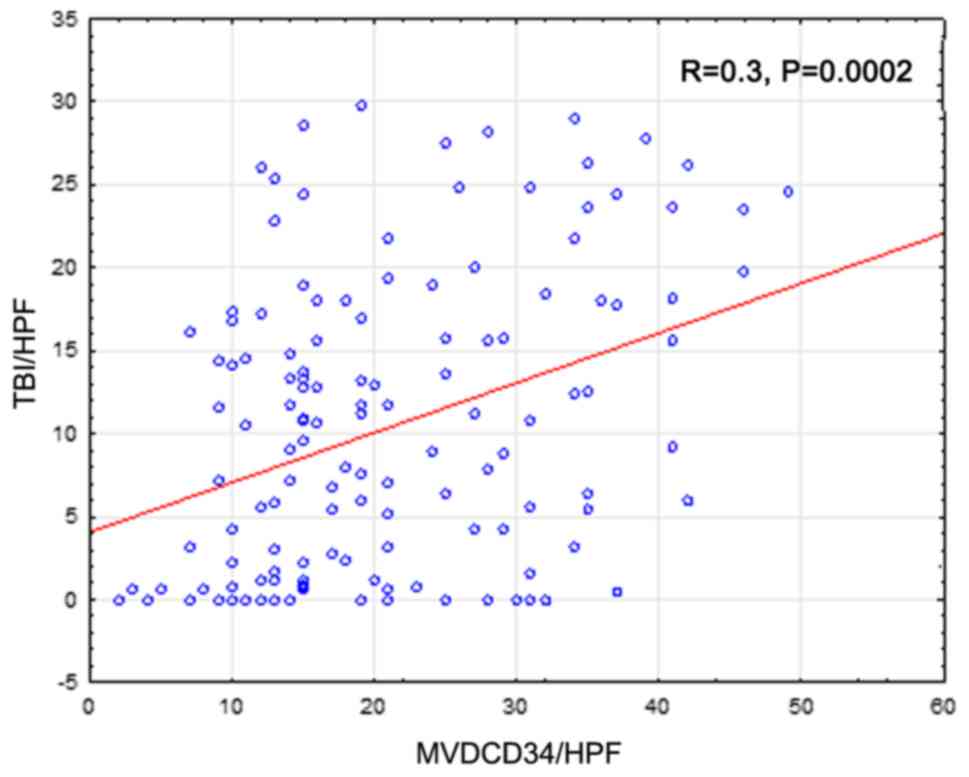|
1
|
Torre LA, Islami F, Siegel RL, Ward EM and
Jemal A: Global cancer in women: Burden and trends. Cancer
Epidemiol Biomarkers Prev. 26:444–457. 2017. View Article : Google Scholar : PubMed/NCBI
|
|
2
|
Siegel RL, Miller KD and Jemal A: Cancer
statistics, 2018. CA Cancer J Clin. 68:7–30. 2018. View Article : Google Scholar : PubMed/NCBI
|
|
3
|
Suarez AA, Felix AS and Cohn DE: Bokhman
redux: Endometrial cancer ‘types’ in the 21st century. Gynecol
Oncol. 144:243–249. 2017. View Article : Google Scholar : PubMed/NCBI
|
|
4
|
Emons G, Beckmann MW, Schmidt D and
Mallmann P; Uterus commission of the Gynecological Oncology Working
Group (AGO), : New WHO Classification of Endometrial Hyperplasias.
Geburtshilfe Frauenheilkd. 75:135–136. 2015. View Article : Google Scholar : PubMed/NCBI
|
|
5
|
Felix AS, Yang HP, Bell DW and Sherman ME:
Epidemiology of endometrial carcinoma: Etiologic importance of
hormonal and metabolic influences. Adv Exp Med Biol. 943:3–46.
2017. View Article : Google Scholar : PubMed/NCBI
|
|
6
|
Colombo N, Creutzberg C, Amant F, Bosse T,
González-Martín A, Ledermann J, Marth C, Nout R, Querleu D, Mirza
MR, et al ESMO-ESGO-ESTRO Endometrial Consensus Conference Working
Group, : ESMO-ESGO-ESTRO consensus conference on endometrial
cancer: Diagnosis, treatment and follow-up. Int J Gynecol Cancer.
26:2–30. 2016. View Article : Google Scholar : PubMed/NCBI
|
|
7
|
Hase K, Shatney C, Johnson D, Trollope M
and Vierra M: Prognostic value of tumor ‘budding’ in patients with
colorectal cancer. Dis Colon Rectum. 36:627–635. 1993. View Article : Google Scholar : PubMed/NCBI
|
|
8
|
Ueno H, Murphy J, Jass JR, Mochizuki H and
Talbot IC: Tumour ‘budding’ as an index to estimate the potential
of aggressiveness in rectal cancer. Histopathology. 40:127–132.
2002. View Article : Google Scholar : PubMed/NCBI
|
|
9
|
Yamaguchi Y, Ishii G, Kojima M, Yoh K,
Otsuka H, Otaki Y, Aokage K, Yanagi S, Nagai K, Nishiwaki Y, et al:
Histopathologic features of the tumor budding in adenocarcinoma of
the lung: Tumor budding as an index to predict the potential
aggressiveness. J Thorac Oncol. 5:1361–1368. 2010. View Article : Google Scholar : PubMed/NCBI
|
|
10
|
Gujam FJ, McMillan DC, Mohammed ZM,
Edwards J and Going JJ: The relationship between tumour budding,
the tumour microenvironment and survival in patients with invasive
ductal breast cancer. Br J Cancer. 113:1066–1074. 2015. View Article : Google Scholar : PubMed/NCBI
|
|
11
|
Lugli A, Kirsch R, Ajioka Y, Bosman F,
Cathomas G, Dawson H, El Zimaity H, Fléjou JF, Hansen TP, Hartmann
A, et al: Recommendations for reporting tumor budding in colorectal
cancer based on the International Tumor Budding Consensus
Conference (ITBCC) 2016. Mod Pathol. 30:1299–1311. 2017. View Article : Google Scholar : PubMed/NCBI
|
|
12
|
Park JY, Hong DG, Chong GO and Park JY:
Tumor budding is a valuable diagnostic parameter in prediction of
disease progression of endometrial endometrioid carcinoma. Pathol
Oncol Res. 25:723–730. 2019. View Article : Google Scholar : PubMed/NCBI
|
|
13
|
Lugli A, Vlajnic T, Giger O,
Karamitopoulou E, Patsouris ES, Peros G, Terracciano LM and Zlobec
I: Intratumoral budding as a potential parameter of tumor
progression in mismatch repair-proficient and mismatch
repair-deficient colorectal cancer patients. Hum Pathol.
42:1833–1840. 2011. View Article : Google Scholar : PubMed/NCBI
|
|
14
|
Grigore AD, Jolly MK, Jia D, Farach-Carson
MC and Levine H: Tumor budding: The name is EMT. Partial EMT. J
Clin Med. 5:E512016. View Article : Google Scholar : PubMed/NCBI
|
|
15
|
Gurzu S, Turdean S, Kovecsi A, Contac AO
and Jung I: Epithelial-mesenchymal, mesenchymal-epithelial, and
endothelial-mesenchymal transitions in malignant tumors: An update.
World J Clin Cases. 3:393–404. 2015. View Article : Google Scholar : PubMed/NCBI
|
|
16
|
Koyuncuoglu M, Okyay E, Saatli B, Olgan S,
Akin M and Saygili U: Tumor budding and E-Cadherin expression in
endometrial carcinoma: Are they prognostic factors in endometrial
cancer? Gynecol Oncol. 125:208–213. 2012. View Article : Google Scholar : PubMed/NCBI
|
|
17
|
Hallmann R, Horn N, Selg M, Wendler O,
Pausch F and Sorokin LM: Expression and function of laminins in the
embryonic and mature vasculature. Physiol Rev. 85:979–1000. 2005.
View Article : Google Scholar : PubMed/NCBI
|
|
18
|
Miyazaki K: Laminin-5 (laminin-332):
Unique biological activity and role in tumor growth and invasion.
Cancer Sci. 97:91–98. 2006. View Article : Google Scholar : PubMed/NCBI
|
|
19
|
Masuda R, Kijima H, Imamura N, Aruga N,
Nakazato K, Oiwa K, Nakano T, Watanabe H, Ikoma Y, Tanaka M, et al:
Laminin-5γ2 chain expression is associated with tumor cell
invasiveness and prognosis of lung squamous cell carcinoma. Biomed
Res. 33:309–317. 2012. View Article : Google Scholar : PubMed/NCBI
|
|
20
|
Marangon Junior H, Rocha VN, Leite CF, de
Aguiar MC, Souza PE and Horta MC: Laminin-5 gamma 2 chain
expression is associated with intensity of tumor budding and
density of stromal myofibroblasts in oral squamous cell carcinoma.
J Oral Pathol Med. 43:199–204. 2014. View Article : Google Scholar : PubMed/NCBI
|
|
21
|
Folkman J: Role of angiogenesis in tumor
growth and metastasis. Semin Oncol. 29 (Suppl 16):15–18. 2002.
View Article : Google Scholar : PubMed/NCBI
|
|
22
|
Demir R, Yaba A and Huppertz B:
Vasculogenesis and angiogenesis in the endometrium during menstrual
cycle and implantation. Acta Histochem. 112:203–214. 2010.
View Article : Google Scholar : PubMed/NCBI
|
|
23
|
Mahecha AM and Wang H: The influence of
vascular endothelial growth factor-A and matrix metalloproteinase-2
and −9 in angiogenesis, metastasis, and prognosis of endometrial
cancer. OncoTargets Ther. 10:4617–4624. 2017. View Article : Google Scholar
|
|
24
|
Viallard C and Larrivée B: Tumor
angiogenesis and vascular normalization: Alternative therapeutic
targets. Angiogenesis. 20:409–426. 2017. View Article : Google Scholar : PubMed/NCBI
|
|
25
|
Nagy JA and Dvorak HF: Heterogeneity of
the tumor vasculature: The need for new tumor blood vessel
type-specific targets. Clin Exp Metastasis. 29:657–662. 2012.
View Article : Google Scholar : PubMed/NCBI
|
|
26
|
Zalewski K, Doniec J, Baranowski W and
Bidziński M: The revised FIGO staging system for uterine
malignancies. Ginekol Pol. 8:778–782. 2010.
|
|
27
|
Czekierdowski A, Czekierdowska S, Czuba B,
Cnota W, Sodowski K, Kotarski J and Zwirska-Korczala K: Microvessel
density assessment in benign and malignant endometrial changes. J
Physiol Pharmacol. 59 (Suppl 4):45–51. 2008.PubMed/NCBI
|
|
28
|
Weidner N: Tumour vascularity and
proliferation: Clear evidence of a close relationship. J Pathol.
189:297–299. 1999. View Article : Google Scholar : PubMed/NCBI
|
|
29
|
Karamitopoulou E, Zlobec I, Kölzer V,
Kondi-Pafiti A, Patsouris ES, Gennatas K and Lugli A: Proposal for
a 10-high-power-fields scoring method for the assessment of tumor
budding in colorectal cancer. Mod Pathol. 26:295–301. 2013.
View Article : Google Scholar : PubMed/NCBI
|
|
30
|
de Boer SM, Powell ME, Mileshkin L,
Katsaros D, Bessette P, Haie-Meder C, Ottevanger PB, Ledermann JA,
Khaw P, Colombo A, et al PORTEC study group, : Toxicity and quality
of life after adjuvant chemoradiotherapy versus radiotherapy alone
for women with high-risk endometrial cancer (PORTEC-3): An
open-label, multicentre, randomised, phase 3 trial. Lancet Oncol.
17:1114–1126. 2016. View Article : Google Scholar : PubMed/NCBI
|
|
31
|
Huang B, Cai J, Xu X, Guo S and Wang Z:
High-grade tumor budding stratifies early-stage cervical cancer
with recurrence risk. PLoS One. 11:e01663112016. View Article : Google Scholar : PubMed/NCBI
|
|
32
|
Zlobec I and Lugli A: Epithelial
mesenchymal transition and tumor budding in aggressive colorectal
cancer: Tumor budding as oncotarget. Oncotarget. 1:651–661. 2010.
View Article : Google Scholar : PubMed/NCBI
|
|
33
|
Mirantes C, Espinosa I, Ferrer I, Dolcet
X, Prat J and Matias-Guiu X: Epithelial-to-mesenchymal transition
and stem cells in endometrial cancer. Hum Pathol. 44:1973–1981.
2013. View Article : Google Scholar : PubMed/NCBI
|
|
34
|
Koelzer VH, Zlobec I, Berger MD, Cathomas
G, Dawson H, Dirschmid K, Hädrich M, Inderbitzin D, Offner F, Puppa
G, et al: Tumor budding in colorectal cancer revisited: Results of
a multicenter interobserver study. Virchows Arch. 466:485–493.
2015. View Article : Google Scholar : PubMed/NCBI
|
|
35
|
Mazurek A and Kuć P:
Angiogenesis-prognostic factor in patients with endometrial cancer.
Ginekol Pol. 76:838–845. 2005.(In Polish). PubMed/NCBI
|
|
36
|
Almangush A, Youssef O, M. Pirinen M,
Sundström J, Leivo I and Mäkitie AA: Does evaluation of tumour
budding in diagnostic biopsies have a clinical relevance? A
systematic review. Histopathology. 74:536–544. 2019. View Article : Google Scholar : PubMed/NCBI
|
|
37
|
Papa A, Zaccarelli E, Caruso D, Vici P,
Benedetti Panici P and Tomao F: Targeting angiogenesis in
endometrial cancer - new agents for tailored treatments. Expert
Opin Investig Drugs. 25:31–49. 2016. View Article : Google Scholar : PubMed/NCBI
|
|
38
|
Lheureux S and Oza AM: Endometrial
cancer-targeted therapies myth or reality? Review of current
targeted treatments. Eur J Cancer. 59:99–108. 2016. View Article : Google Scholar : PubMed/NCBI
|















